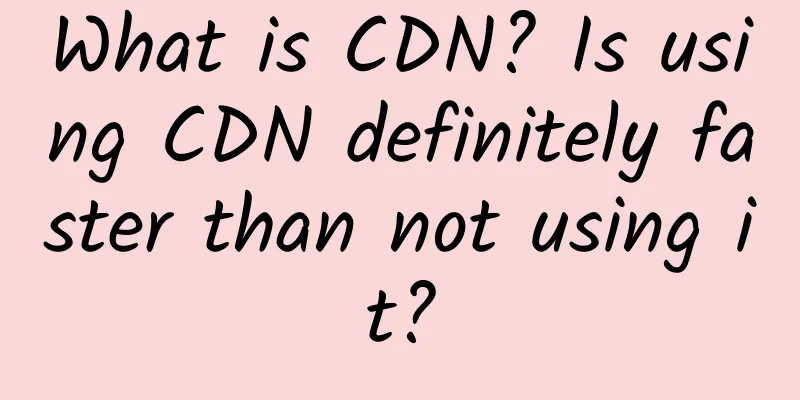Wireless Broadband Alliance: 5G should not be viewed in a narrow sense and can coexist harmoniously with Wi-Fi 6

|
Tiago Rodrigues, who took over as CEO of the Wireless Broadband Alliance (WBA) in September, said that in the coming months, the focus of the WBA will include ensuring that Wi-Fi 6 and 5G become good friends, rather than allowing any kind of friction or other comparisons between the two. Tiago Rodrigues joined the WBA in 2004 and was one of the drivers of the deployment of Hotspot 2.0 and SIM authentication on Wi-Fi. WBA's operator members include AT&T, Deutsche Telekom, NTT DoCoMo and Comcast, while technology provider members include Nokia, Google, Facebook and Qualcomm. One of the reasons why the industry is so interested in the harmony of Wi-Fi 6 and 5G has to do with the increasing convergence between 5G and Wi-Fi 6. A lot of information about 5G has led people to believe that 5G is the best technology ever. However, Tiago Rodrigues said that in some cases, 5G is not the better choice for internal enterprise coverage.
“5G should not be viewed just as 5G NR technology, but rather as a transition platform into which other types of technologies can be integrated,” he said. For example, he said, no one would use Wi-Fi to cover the highway. It is not designed to provide mobility at 70 miles per hour, which is the scenario where 5G can provide coverage. But in the indoor coverage scenario of a 20-story hotel or office building, 5G may not be the ideal technology choice due to cost and equipment complexity. Fundamentally, he said, "we should not look at 5G narrowly." In the United States, CBRS is sometimes better than Wi-Fi, and it may become a dedicated band for deploying private LTE. But Tiago Rodrigues said he believes that Wi-Fi will still be part of it. With so many options, the decision-making of IT managers or CIOs is becoming more and more complicated. They need to determine their requirements and goals to choose the best solution, whether it is 5G slicing provided by operators or other products. WBA and Huawei recently announced a Wi-Fi pilot project involving a series of Wi-Fi 6 validation tests at the University of Mondragon in Spain, where they are investigating innovative Wi-Fi 5 use cases. The pilot aims to lay the foundation for immersive education methods (such as VR and AR) that will change the way teachers and students interact on campus. Likewise, it is expected that the trial will include testing of live webcasting and distance education using Wi-Fi 6 technology. Earlier this year, WBA completed a Wi-Fi 6 and IoT trial with Mettis Aerospace, a UK-based designer and manufacturer that supplies parts to the aerospace and defense industries. Mettis Aerospace reportedly decided to adopt Wi-Fi 6 technology because of its backward compatibility with a wide range of devices and its long lifespan. The company’s machines are often required to last for decades, and Wi-Fi meets the requirements, including in the area of security. Tiago Rodrigues said the United States continues to work to find more spectrum for unlicensed spectrum technologies such as Wi-Fi, and the situation in other countries is roughly the same. |
<<: What is edge computing and why is it important?
>>: How much room do operators have for increasing speed and reducing fees?
Recommend
5G healthcare has attracted much attention, but three points need to be paid attention to in its development
It has been more than a year and a half since my ...
HostKvm newly launched 50% off in Europe, $3.5/month - 2GB/40GB/500GB@100Mbps/Germany & Netherlands data centers
HostKvm recently launched a new VPS host in Europ...
Do you know which city has the fastest Wi-Fi speed in the world?
Since the coronavirus crisis, fast internet has b...
In just 3 months, the cumulative financing exceeded 600 million yuan. Ruishu Information announced the completion of the C3 round of financing of 100 million yuan
After completing the C2 round of financing in Sep...
Does 5G millimeter wave technology pave the way for the next stage of connectivity?
In the rapidly developing digital age, the scope ...
WiFi speed is slow, try these 8 simple tips
Slow WiFi speed is always a headache, especially ...
Huawei and its ecosystem partners share the responsibility for enterprise digital transformation and cloud migration
[51CTO.com original article] There is no doubt th...
5G+edge computing is in the first stage
On March 3, 2020, GSMA released the report "...
PoE Troubleshooting Guide: Common Problems and Solutions
Power over Ethernet (PoE) is a revolutionary tech...
10gbiz: Hong Kong CN2 GIA+China Unicom VIP line launched, VPS 60% off monthly payment starting from US$2.75
10gbiz has launched a new VPS host in the Hong Ko...
Have you been "touched" by 5G today?
The number of online 5G users has exceeded 100 mi...
Development status of private network communication: broadband and narrowband integration becomes a consensus, and equipment vendors are "shuffling"
A year ago, a netizen posted a series of articles...
What does the operator's first-half performance reflect about the second half of the year?
With the release of the operating data of the thr...
DotdotNetwork: $19/month - 2 cores, 16G memory, 30G SSD, 4TB/10Gbps bandwidth, Los Angeles data center
Recently, I received a submission from DotdotNetw...
Bypassing 5G and heading straight for 6G, Russia made an "incredible" decision
Russia made an incredible decision - abandoning 5...









